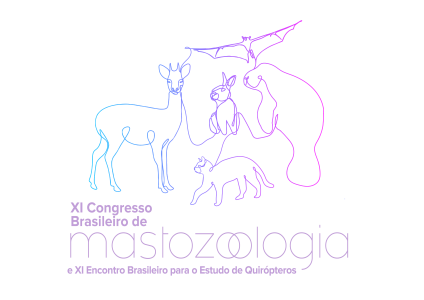Dados do Trabalho
Título:
FINE-SCALE FIRE PATCHINESS AFTER PRESCRIBED BURNING AND THE IMPLICATIONS FOR FIRE-INDUCED SMALL MAMMAL MORTALITY – PRELIMINARY RESULTS FROM STUDIES IN THE CERRADO
Resumo:
The distribution of unburned patches within a fire perimeter (patchiness) can be deterministic, attributed to a landscape condition (e.g., heterogeneity of fuel type, topography, drainage lines), fire behavior, or weather; or it may be also stochastic, regarded as being caused by chance. Understanding fine-scale fire patchiness has significant implications for ecological processes and biodiversity conservation. Small and ephemeral patches of unburnt vegetation function as fire refuges during and after burning, influencing both the in-situ survival and the recolonization of fire-affected areas by small mammals. This study assesses fine-scale fire patchiness (inferred from patch density and mean patch length), ash proportions and small mammal mortality in a set of low-intensity prescribed fires, which were performed in April 2022 on two open grasslands from the Serra do Cipó National Park and Serra do Intendente State Park. We used line transects to sample burning patterns of ground layer vegetation and detect small mammals directly killed or affected by fire. The starting point and direction of each transect was haphazardly selected within the boundary of the fire, and a footfall method was used: as the first observer looks for dead or injured animals in a 180° view along the selected direction, the second observer close behind walks and, for every footfall (at ≈1m intervals), records whether the support foot has stepped on a burnt or unburnt patch. For burned patches, it was recorded whether the tip of the foot touched unburned vegetation, partially burned vegetation, ash, baresoil, or rock. For unburned patches or pre-fire samples, the presence of vegetation and baresoil or rock was recorded. We made 15 transects (20 meters long) in each area (pre- and post-fire), to estimate the black and white ash cover, after 20 meters (the end of transects), four photos were taken at each of the four cardinal points, perpendicular to the ground and 1.30 meters high. Each transect was described by variables derived from the field data (percentage burned, unburned patch density, and mean unburned patch length). Fire patchiness varied according to the ground cover before the fire, declining under thicker vegetation, where unburned patches were smaller and fewer. Within the burned patches, the total ash coverage was approximately 50%, and the proportion of black ash was always more than twice that of white ash, reflecting the low severity of burning. No small mammals were found dead or injured along the transects, although two reptiles killed directly by fire radiation (Ophiodes cf. striatus and Bothrops alternatus) have been noted. Our preliminary results indicate that after the rainy season: (1) fine-scale fire patchiness depends on the pre-fire patterns of ground layer vegetation; (2) burning tends to be of low-intensity; and (3) both direct and indirect impacts on local small mammal populations are likely to be negligible. It suggests that prescribed burning, if properly implemented, might be considered as a management tool to control, and prevent high-severity wildfires, such as what happened in the Pantanal in 2020, with minimal damage to local small mammal populations.
Financiamento:
Área
Conservação
Autores
Christian Niel Berlinck, Eugenia Kelly Luciano Batista, Daniel Almeida Rocha
